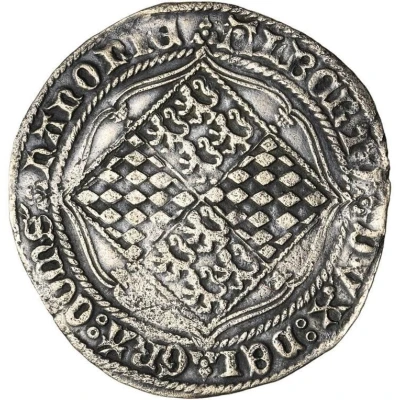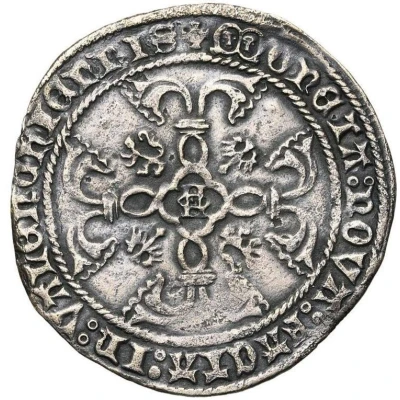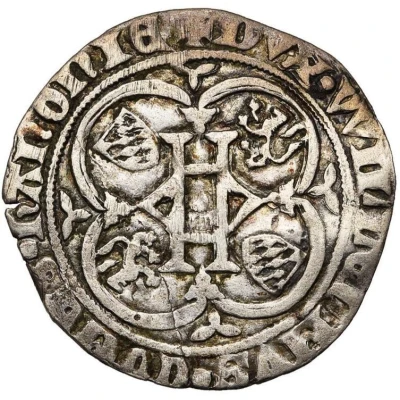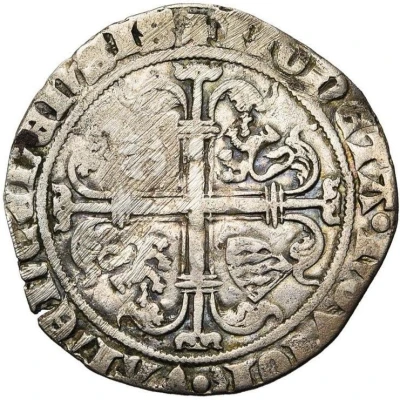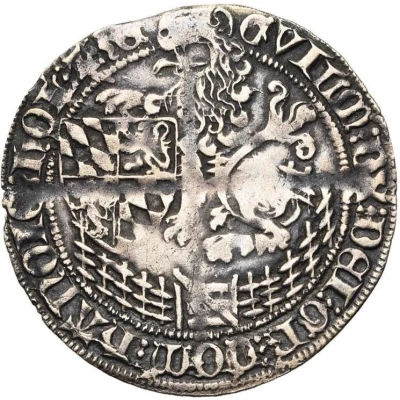
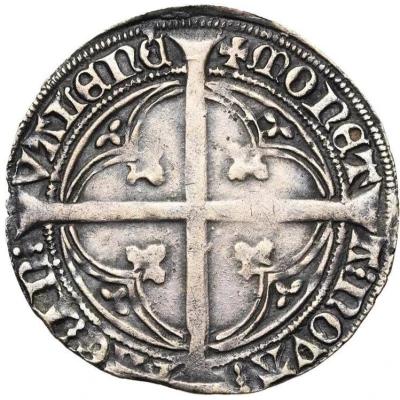

© Jean Elsen & ses Fils s.a.
2 Groschen "Thuyne" - William IV of Bavaria ND
| Silver | 3.0 g | 29 mm |
| Issuer | County of Hainaut (French States) |
|---|---|
| Count | William IV of Bavaria (1404-1417) |
| Type | Standard circulation coin |
| Years | 1404-1417 |
| Value | 2 Groschen |
| Currency | Gros (1071-1506) |
| Composition | Silver |
| Weight | 3.0 g |
| Diameter | 29 mm |
| Shape | Round (irregular) |
| Technique | Hammered |
| Orientation | Variable alignment ↺ |
| Demonetized | Yes |
| Updated | 2024-10-04 |
| Numista | N#313881 |
|---|---|
| Rarity index | 100% |
Reverse
Long cross pattee intersecting legend, over a smaller quadrilobe decorated with fleur-de-lis, trefoils in the exterior angles.
Script: Latin
Lettering: ✠ mOnETA ⋮ nOVA⋮ FAC' ⋮ In VALEnC'
Translation: New coinage made in Valenciennes.
Comment
The 2 gros/groot coin was sometimes known as a plaque during this era in the Low Countries.This type also circulated in Holland, where it was known as a Wilhelmustuin (William's thuyne). We list it in Hainaut since it was struck there.
Interesting fact
One interesting fact about the 2 Groschen "Thuyne" coin is that it was issued during the reign of William IV of Bavaria, who was also known as William III of Holland and William II of Hainaut. He was a member of the House of Wittelsbach and ruled over a large territory that included Bavaria, Holland, Hainaut, and other regions in Europe. The coin was minted in the County of Hainaut, which was a French state at the time, and features an image of William IV on one side and the coat of arms of Hainaut on the other. The use of silver in the coin's minting was a common practice during this period, as it was a valuable and durable metal that was widely used in coinage throughout Europe.
